Growing cherries and achieving a bountiful harvest in Northern Europe, Scandinavia, or the Alpine region is entirely possible. By selecting the right variety and considering flowering times, the tree can withstand harsh winters and remain productive. Let’s explore the best cold-hardy cherry varieties and their cultivation techniques.
Table of contents
Requirements for Cold-Hardy Cherry Varieties
Cherries thrive with adequate watering but cannot tolerate waterlogged roots. Their flower buds are sensitive to temperature fluctuations, and the bark and branch forks are vulnerable to frost damage.
Breeders have developed cold-resistant varieties with excellent yields while maintaining high fruit quality and disease resistance. These varieties are adapted to different climates, so each has unique characteristics.
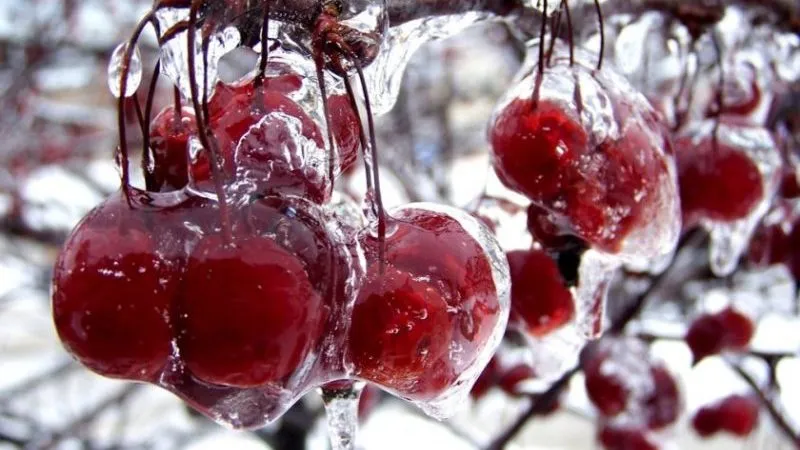
General requirements for cold-hardy cherries:
- Resistance to the variety’s maximum tolerable frost levels;
- Maintained frost resistance during thaws;
- Cold-hardiness of flower buds during late frosts;
- Quick bark recovery after frost damage;
- Tolerance to drought and excess moisture;
- Low maintenance requirements;
- Immunity to common diseases.
Additional considerations:
- Time to establishment and fruiting;
- Yield capacity;
- Ease of harvesting and transportability.
Best Cold-Hardy Cherry Varieties
The ideal variety for harsh climates combines tree hardiness with frost-resistant flower buds. Berry flavor, ripening time, and yield are equally important.
Based on flowering and fruiting times, varieties are grouped into three categories:
- Early-season (Fertile, Stella, Lapins, Kordia). Harvest occurs in late June to early July.
- Mid-season (Regina, Summit, Sylvia). Ripening occurs in mid-July.
- Late-season (Sweetheart, Hedelfingen, Summit). Berries mature in late July.
Regina
A mid-season, self-sterile variety with high cold resistance in both buds and tree. Recovers well after severe frost damage. Tolerates temperatures down to -30°C. Moderate drought sensitivity.
The tree grows quickly, reaching up to 3 m. Its pyramidal crown is moderately dense. Highly resistant to fungal diseases. Begins fruiting in the 5th year.
Berries are deep burgundy, sweet, with firm flesh, weighing 5-6 g. They detach easily from the stem and resist rain-induced cracking. After ripening, they remain on the tree for up to 10 days and are versatile in use.
Yield: 30 kg per tree. Excellent transportability.
Stella
An early-season, self-sterile variety. Tree hardiness exceeds that of flower buds. Adaptable to various conditions and drought-resistant. Frost tolerance: -28°C.
Grows up to 4 m with a lush pyramidal crown. Moderate growth rate and high resistance to cherry leaf spot.
Fruiting begins in the 4th year. Large burgundy berries weigh around 8 g. The tender, semi-firm flesh separates easily from the pit. Sweet flavor with no cracking in rain. Versatile usage.
Yield: up to 80 kg per mature tree. Excellent flavor, consistent fruiting, and transportability make Stella ideal for commercial cultivation.
Fertile
Early-season, self-sterile variety. Flower buds are less cold-hardy than the tree. Drought-tolerant but sensitive to waterlogging. Strong recovery after frost damage. Tolerates -27°C to -35°C.
Grows up to 5 m with a drooping, spherical crown. Resistant to cherry leaf spot and brown rot. Fruits from the 4th year.
Note! Fertile adapts well to weather extremes. Rain or drought does not affect yield.
Bright orange berries with yellow blush weigh 4-6 g. Sweet with a refreshing tartness. Juicy pink flesh has a crisp texture and easy pit separation.
Yield: 30-50 kg per 10-year-old tree. Berries transport well.
Hedelfingen
Late-season, self-sterile variety. High frost resistance in both tree and flower buds. Moderate drought tolerance. Minimal bud loss in frost. Prefers full sun, adaptable to soil. Tolerates -30°C.
Vigorous growth with a dense, dome-shaped crown. Max height: 2.5 m. Fruits from the 4th year. Resistant to cherry leaf spot.
Heart-shaped, dark-red berries (5 g). Tender, juicy flesh with a sweet-tart balance. Resists cracking but drops quickly after ripening.
Yield: 23-66 kg per tree. Good transportability.
Summit
Mid-season, self-sterile variety. Flower buds are less hardy than the tree. Tolerates drought and sunscald. Low soil requirements, long-lived. Frost tolerance: -30°C.
Fast-growing, robust tree. Without pruning, reaches 20 m. Wide, sparse pyramidal crown. Strong branches support snow cover, protecting against frost. Fruits from the 4th year. Resistant to brown rot and cherry leaf spot.
Round, smoky-red berries (up to 10 g). Juicy, semi-firm flesh with a unique sweet flavor.
Consistent yield: ~30 kg per tree. Excellent transportability.
Sweetheart
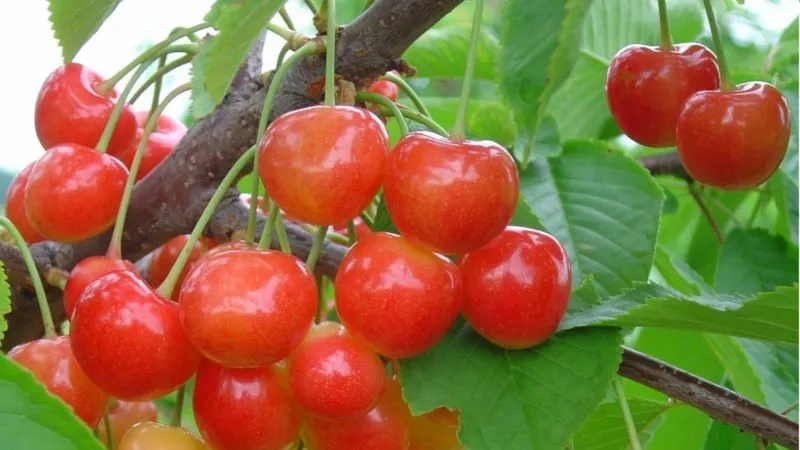
Late-season, self-sterile variety. Moderate frost resistance in flower buds. Trunk resists frost cracks and sunscald. Tolerates -31°C.
Strong, upright pyramidal crown. Moderate growth (2-3 m). Fruits from the 5th year. Highly resistant to brown rot, cherry leaf spot, and bacterial canker.
Round, pink berries (4-5 g). Firm yellow flesh with a sweet, slightly bitter note. Resists rain-induced cracking.
Yield: 20-30 kg per tree. Good transportability.
Lapins
Early-season, self-sterile variety. Tree and flower buds differ in hardiness but tolerate spring frosts and wet soil. Tolerates -30°C.
Broad, rounded crown. Grows to 4 m. Fruits from the 4th year. Resistant to brown rot and bacterial canker; moderate resistance to cherry leaf spot.
Large, oval, deep-red berries (up to 8 g). Sweet, firm flesh with mild tartness. Resists cracking, easy to pick. Ideal for fresh consumption.
Yield: up to 30 kg per mature tree.
Sylvia
Mid-season, self-sterile variety. High tree hardiness, moderate bud resistance. Prefers moist soil. Tolerates -25°C.
Upright, pyramidal crown (3.5 m max). Fruits from the 4th year. Moderate resistance to pests and fungi.
Important! Harvest with stems attached to prolong shelf life.
Heart-shaped, burgundy berries (5-7 g). Juicy, semi-firm flesh with rich sweetness. Best for fresh eating.
Yield: 15-25 kg per tree. Poor transportability.
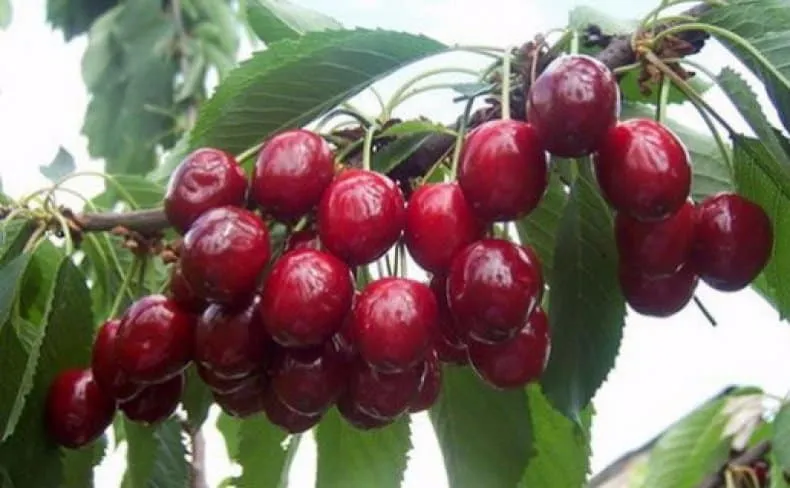
Kordia
Late-season, self-sterile variety with balanced tree and bud hardiness. Excellent regenerative ability. Tolerates -35°C.
Open, spherical crown (up to 4 m). Fruits from the 5th year. High resistance to brown rot; moderate to cherry leaf spot and bacterial canker.
Broad, round berries (7.5 g) with exceptional sweetness. Dense, juicy, aromatic flesh. Some cracking in wet conditions.
Note! Kordia received the highest taste rating (4.9/5) in expert evaluations.
Yield: up to 40 kg per tree. Excellent transportability.
Burlat
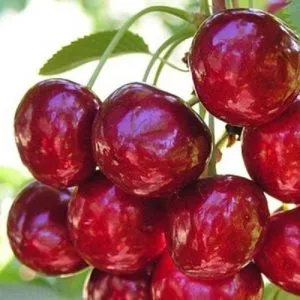
Early-season, self-sterile variety. High frost resistance in both tree and buds. Prefers moist soil. Tolerates -27°C.
Vigorous growth with a broad, medium-density crown (max 4.5 m). Resistant to cherry leaf spot and brown rot. Fruits from the 4th year.
Heart-shaped, dark-red berries (6 g). Sweet, juicy flavor. Yield: 20-40 kg per tree. Good transportability.
How to Choose the Right Variety
Self-fertile trees do not require cross-pollination but set only ~50% of flowers as fruit. Thus, self-fertility alone is not a decisive factor. For higher yields, plant pollinator varieties.
Tip! When planting pairs, ensure overlapping bloom times.
Flavor is key. Kordia ranks highest for taste. Large, sweet varieties include Lapins, Summit, and Stella. Burlat, Hedelfingen, and Fertile offer a sweet-tart balance.
For home gardens, compact trees are practical. Consider local climate and disease resistance. Commercial growers prioritize yield, flavor, appearance, and transportability.
By Region
Scandinavia and the Alps have harsh climates, so yields will be lower than in Central Europe. However, cold-hardy cherries thrive here when matched to regional conditions.
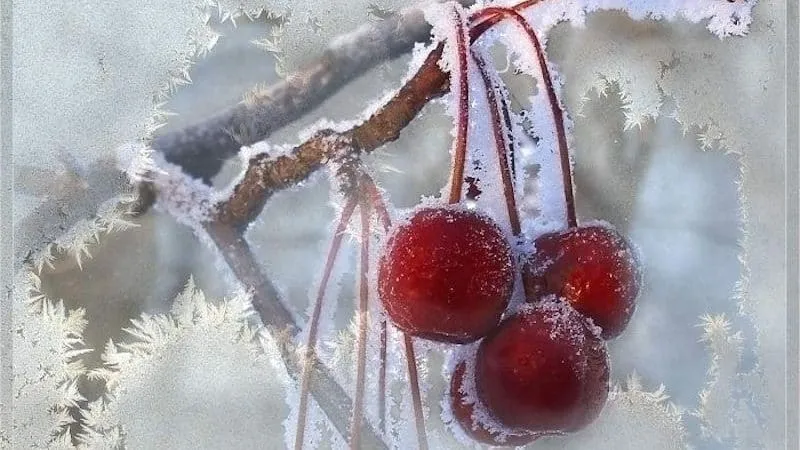
Best for the Alpine region:
- Sweetheart;
- Fertile;
- Kordia;
- Regina.
For Scandinavia:
- Summit;
- Lapins;
- Sweetheart;
- Hedelfingen.
For variable Central European climates:
- Stella;
- Burlat;
- Fertile;
- Sylvia.
Northern areas suit late-season varieties; Central Europe favors early types.
Testimonials
Cold-hardy cherries receive positive feedback. Most growers attribute failures to inexperience or poor-quality saplings:
Anna, Germany: “Our neighbors grow Kordia cherries. The berries are large and incredibly flavorful. We planted one last year and harvested our first crop – the taste is unforgettable.”
Thomas, Sweden: “I ordered Fertile and Hedelfingen saplings online. Despite our cold climate, both survived winter and grew vigorously.”
Conclusion
Cold-hardiness is a rare trait in cherries. Beyond proper care, selecting regionally adapted varieties is crucial. Early types must resist late frosts.
Scandinavia and the Alps need ultra-hardy trees; Central Europe benefits from weather-flexible varieties. First, match varieties to your climate, then prioritize flavor.







